Restoration Framework
A science-based approach to restore coregonines, using principles of adaptive management and conservation biology, was endorsed by the Council of Lake Committees (representing 13 fishery management agencies across the Great Lakes basin) on May 1, 2018. It is a basin-wide framework designed to implemented at the lake-specific level. To learn more, an in-depth review of the restoration framework can be accessed here.

Planning
Scientists provide information to support coregonine restoration efforts via the Planning phase of the Framework. Specific tasks include updating our understanding of coregonine diversity, comparing historical and contemporary coregonine distributions, using computer models to forecast population trends for various scenarios, and identifying key threats and impediments to coregonine restoration.
Restore
The Restoration phase of the Framework takes the information from the Planning phase and turns it into action. In this phase, managers and scientists work together to evaluate restoration options, develop restoration plans, and implement those plans.
Evaluate and Learn
The last phase of the Framework includes steps to Evaluate and Learn from restoration actions, such as monitoring populations and habitats and recommending modifications to restoration programs. After this phase, the cycle begins again and can include additional planning or move straight into new or modified restoration actions.

